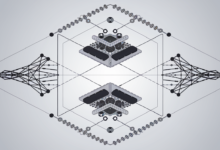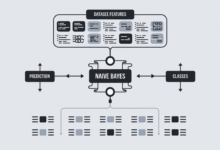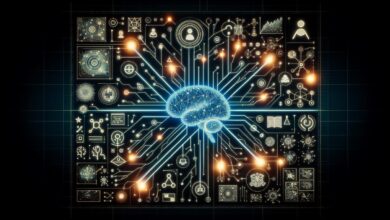
Understanding Bias in Machine Learning
Bias in machine learning refers to systematic errors in algorithms, stemming from data-driven and algorithmic sources. These biases can significantly impact model predictions and outcomes.
Data-driven bias occurs when training data doesn't accurately represent the entire population. For example, a medical dataset primarily composed of male patient data may lead to less accurate predictions for female patients.
Algorithmic bias arises from the architecture of the algorithms themselves. Facial recognition technology, for instance, has shown better performance on lighter-skinned individuals compared to those with darker skin.
These biases can manifest in various contexts, such as the legal system and healthcare. The COMPAS algorithm, used to predict recidivism, has demonstrated bias against African Americans. In healthcare, biases in data collection can perpetuate existing inequalities in resource allocation.
To counter these biases, it's crucial to use diverse and representative datasets during training. Techniques like adversarial debiasing can help mitigate biases by forcing the primary model to make unbiased predictions.
Implementing best practices throughout the machine learning pipeline is essential. This includes:
- Ensuring data diversity
- Careful pre-processing
- Effective feature engineering
- Continuous monitoring of deployed models
Cross-validation techniques and reinforcement learning debiasing can also contribute to reducing biases and improving model robustness. By addressing both data-driven and algorithmic biases, we can develop fairer and more accurate machine learning models.
Real-World Examples of Bias
Joy Buolamwini's work at MIT revealed significant shortcomings in facial recognition technology, particularly in its inability to accurately identify individuals with darker skin tones. This flaw emerged from training datasets predominantly including images of lighter-skinned individuals.
The COMPAS (Correctional Offender Management Profiling for Alternative Sanctions) system used in U.S. courts has shown bias against African American defendants, flagging them as high risk nearly twice as often as white defendants.
In healthcare, an algorithm was found to allocate more resources to white patients than to black patients with similar levels of need. This misallocation arose from training on historical data that embedded existing inequalities.
Similar patterns of bias can be observed in other domains, such as:
- Hiring algorithms favoring male candidates
- Advertising platforms serving different job ads based on gender
To mitigate such biases, multiple strategies must be adopted throughout the machine learning lifecycle. These include:
- Collecting diverse datasets
- Applying debiasing techniques
- Using comprehensive validation methods
- Ongoing monitoring of deployed models
Types and Detection of Bias
Bias in machine learning models manifests in various forms:
- Selection bias: Occurs when training data is not representative of the full population.
- Measurement bias: Arises from erroneous or imprecise data collection.
- Algorithmic bias: Inherent to the design and functioning of the algorithm itself.
To detect these biases, several techniques can be employed throughout the machine learning pipeline:
Data Collection Phase:
- Ensure dataset diversity through exploratory data analysis and statistical tools.
Data Pre-processing Phase:
- Use appropriate imputation and normalization methods to address missing values and standardize features.
Feature Engineering Phase:
- Measure feature importance and scrutinize impacts on different groups using tools like SHAP values.
Model Training and Evaluation Phase:
- Employ cross-validation techniques and fairness metrics to ensure model generalization.
Post-Deployment Monitoring:
- Continuously monitor model performance using observability platforms and conduct regular audits.
By applying these techniques, we can systematically identify and mitigate biases, leading to fairer and more accurate predictive models.

Fairness Definitions and Metrics
Key fairness concepts in addressing bias in machine learning models include:
- Equalized odds: Requires equal true positive and false positive rates across all classes of a sensitive attribute.
- Demographic parity: Aims for equal probability of a positive outcome across different groups.
- Individual fairness: Ensures similar individuals receive similar treatment.
To implement these concepts:
- Identify specific fairness goals suitable for the model's application.
- Apply fairness metrics throughout the model's development lifecycle.
- Incorporate fairness constraints into the loss function during training.
- Include fairness metrics in model assessment alongside traditional performance metrics.
- Implement post-deployment monitoring to ensure ongoing fairness.
By rigorously applying these fairness concepts and metrics, we can better ensure that machine learning models operate equitably, promoting trust in AI-driven solutions.

Bias Mitigation Techniques
Bias mitigation in machine learning is crucial for fair and equitable model decisions. There are three main categories of techniques:
Pre-processing techniques
These modify training data before model training and include:
- Reweighing: Assigning different weights to training examples from different demographic groups
- Data augmentation: Artificially increasing representation of underrepresented groups
- Resampling: Adjusting data distribution to equalize different classes
In-processing techniques
These are applied during model training:
- Adversarial debiasing: Training a primary model alongside an adversarial model to reduce influence of protected attributes
- Fairness-aware learning algorithms: Incorporating fairness constraints into the learning process
- Reinforcement Learning (RL)-based debiasing: Training an RL agent to make fair decisions through rewards and penalties
Post-processing techniques
These adjust model output after training:
- Threshold adjustment: Modifying decision thresholds for different groups to equalize outcomes
- Output modification: Directly altering predictions to ensure fairness
- Reassignment of outputs: Reallocating predicted outcomes to meet fairness criteria while minimizing accuracy impact
Implementing these techniques requires understanding both data and model dynamics. Continuous assessment using fairness metrics is essential to maintain model fairness throughout its lifecycle.
Challenges and Future Directions
Several challenges persist in addressing bias in machine learning:
- Collecting diverse datasets: Acquiring comprehensive, representative data is often constrained by resources, privacy, and ethical considerations.
- Model complexity: Advanced models like deep neural networks can be opaque, complicating bias identification and correction.
- Model drift: Biases can evolve as data distributions change, requiring continuous monitoring and adaptation.
- Interdisciplinary nature: Bias is rooted in social, cultural, and historical contexts, necessitating collaboration across various disciplines.
Future directions for achieving fair AI include:
- Increasing availability of diverse datasets through synthetic data generation and inclusion of underrepresented groups.
- Promoting interdisciplinary cooperation to integrate insights from sociology and ethics into machine learning pipelines.
- Implementing regulatory frameworks to ensure responsible AI development and use.
- Advancing debiasing techniques through continued research in areas like adversarial debiasing and reinforcement learning.
- Fostering collaboration between academia, industry, and government to develop novel fairness-prioritizing algorithms and frameworks.
Addressing bias in machine learning requires a multifaceted approach combining diverse datasets, interdisciplinary collaboration, robust regulations, and advanced debiasing techniques.
Addressing data-driven and algorithmic biases can lead to more equitable and accurate machine learning models, benefiting diverse populations and ensuring fair AI technology.
Writio – Your AI content writer for SEO-friendly articles with images. This content was written by Writio.








